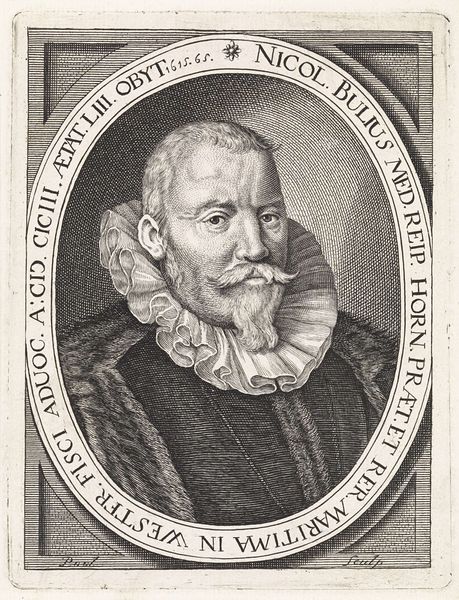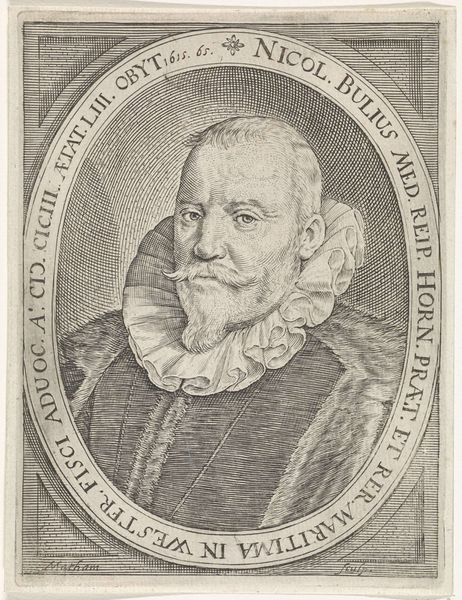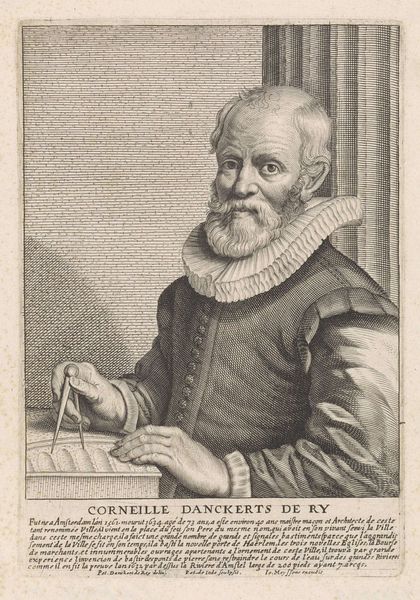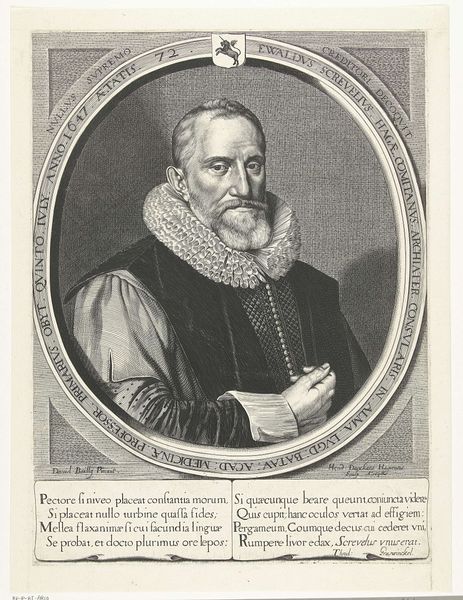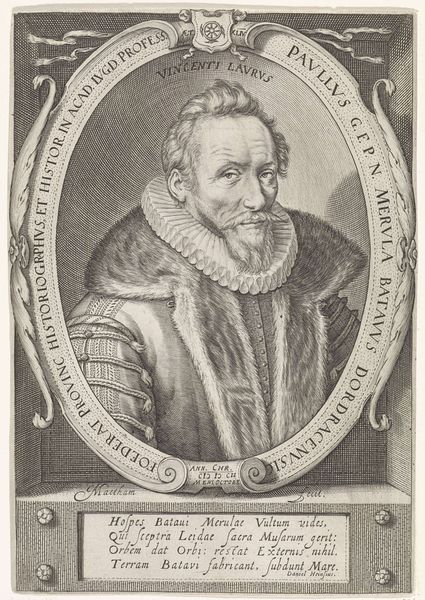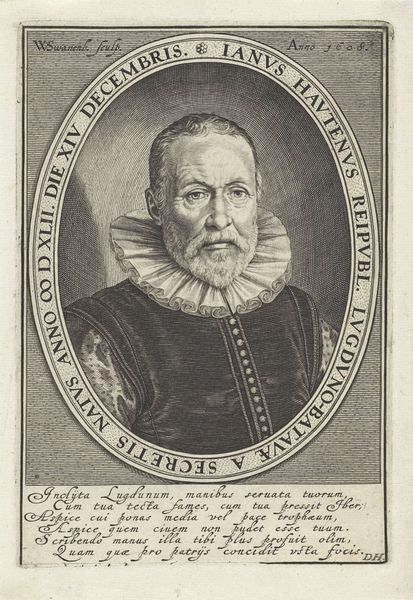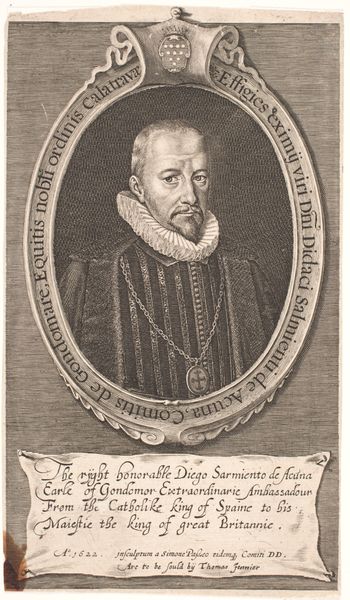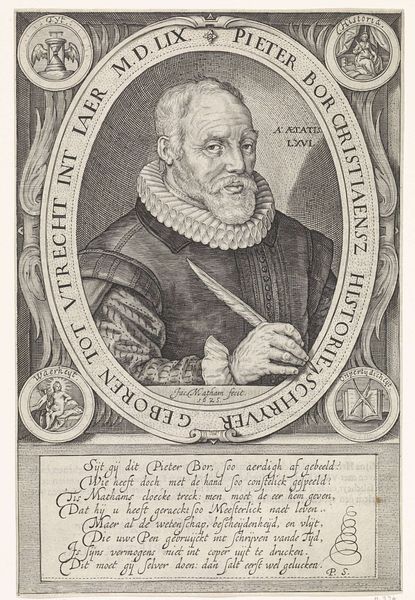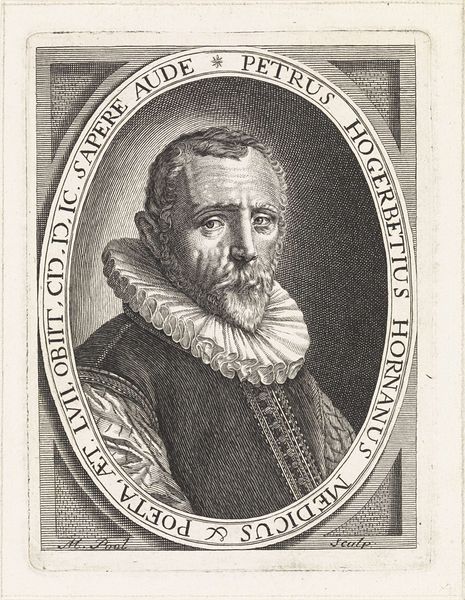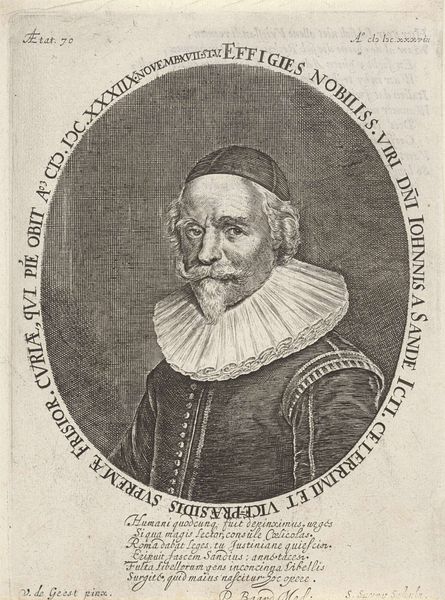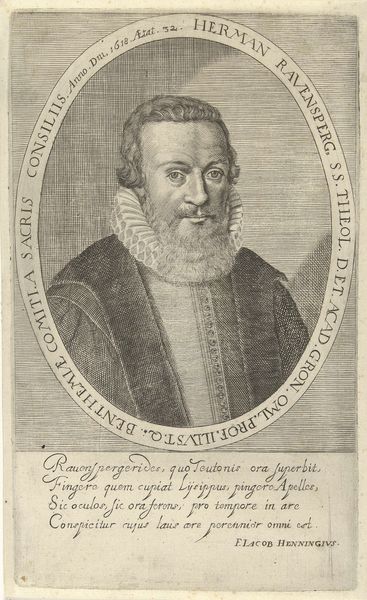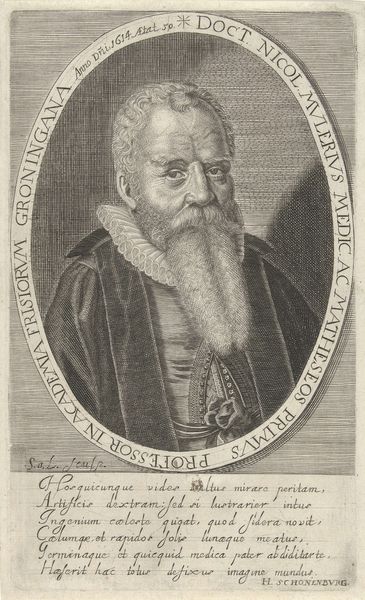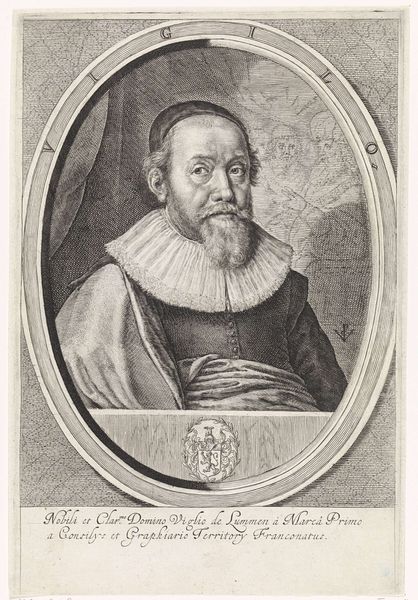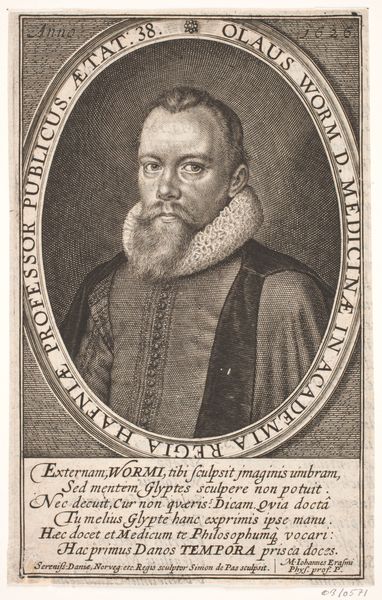
#
pencil drawn
#
photo restoration
#
old engraving style
#
film poster
#
portrait reference
#
old-timey
#
19th century
#
golden font
#
historical font
#
columned text
Dimensions: height 314 mm, width 223 mm
Copyright: Rijks Museum: Open Domain
Curator: This is Crispijn van de Passe the Younger's "Portret van Otto Heurnius," created in 1642. It’s currently held in the Rijksmuseum. Editor: It's interesting. It seems so formal, very stiff and posed. The inscription around the portrait feels almost…oppressive. How should we be approaching this? Curator: Well, let’s think about the materials and the production of this engraving. Consider the labor involved in creating the original image and the subsequent printing process. These prints were, in essence, a form of reproducible media. Do you see the text surrounding the portrait? What does that tell you about the intended audience and purpose? Editor: The text obviously indicates this was a formal portrait of a professor, intended for a scholarly or academic audience. Was this, then, a means of creating and distributing an image of a respected figure? Curator: Precisely! Engravings like these facilitated the circulation of knowledge and social standing. It transforms him into an almost industrial commodity – one tied to academic celebrity and intellectual prowess. Consider how the very act of reproducing and disseminating this image cemented his authority. What's really interesting is questioning what function that kind of ‘academic celebrity’ filled. Was it truly about scholarship, or were there other systems of power and social control at play? Editor: That is such an important point. By considering the engraving’s production and distribution, it reveals layers of social meaning that might be missed if only looking at its aesthetic qualities. Curator: Exactly. The material circumstances and means of production aren't just secondary details, they actively shape our understanding of the artwork’s significance and place in history. Editor: I've never thought about a portrait this way before, focusing on how it was made, and its impact in early media – and I see this is just so rich when you examine those aspects.
Comments
No comments
Be the first to comment and join the conversation on the ultimate creative platform.
